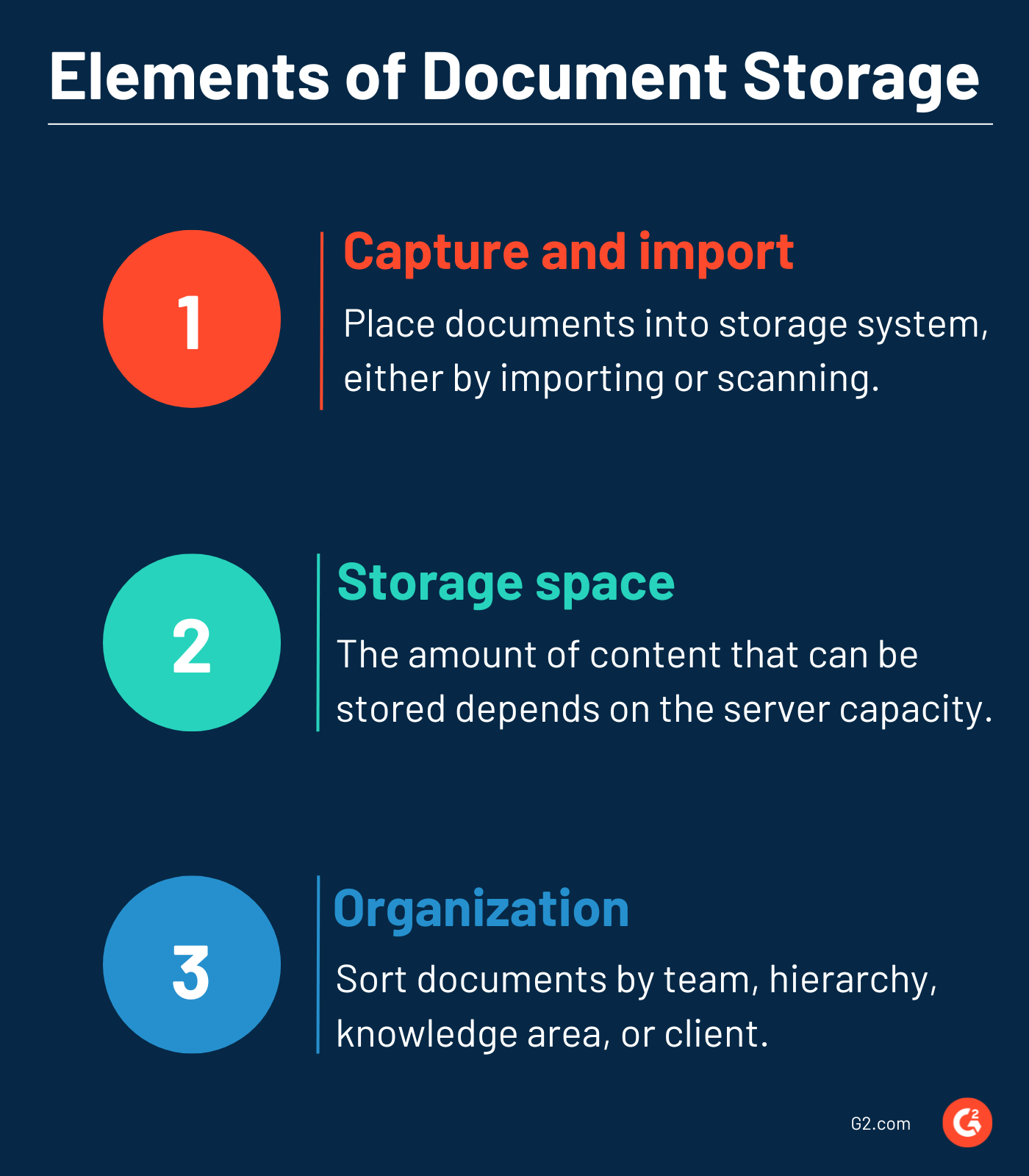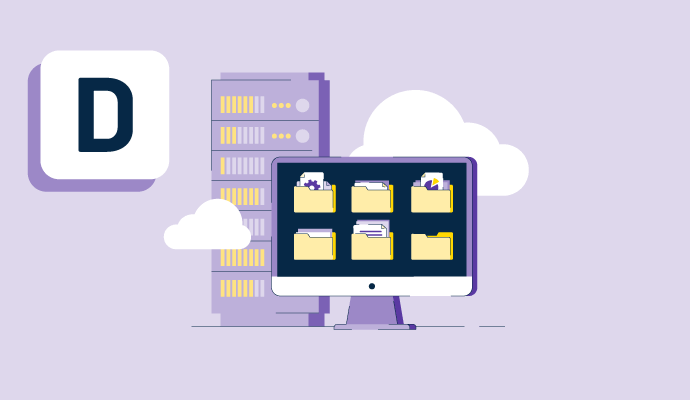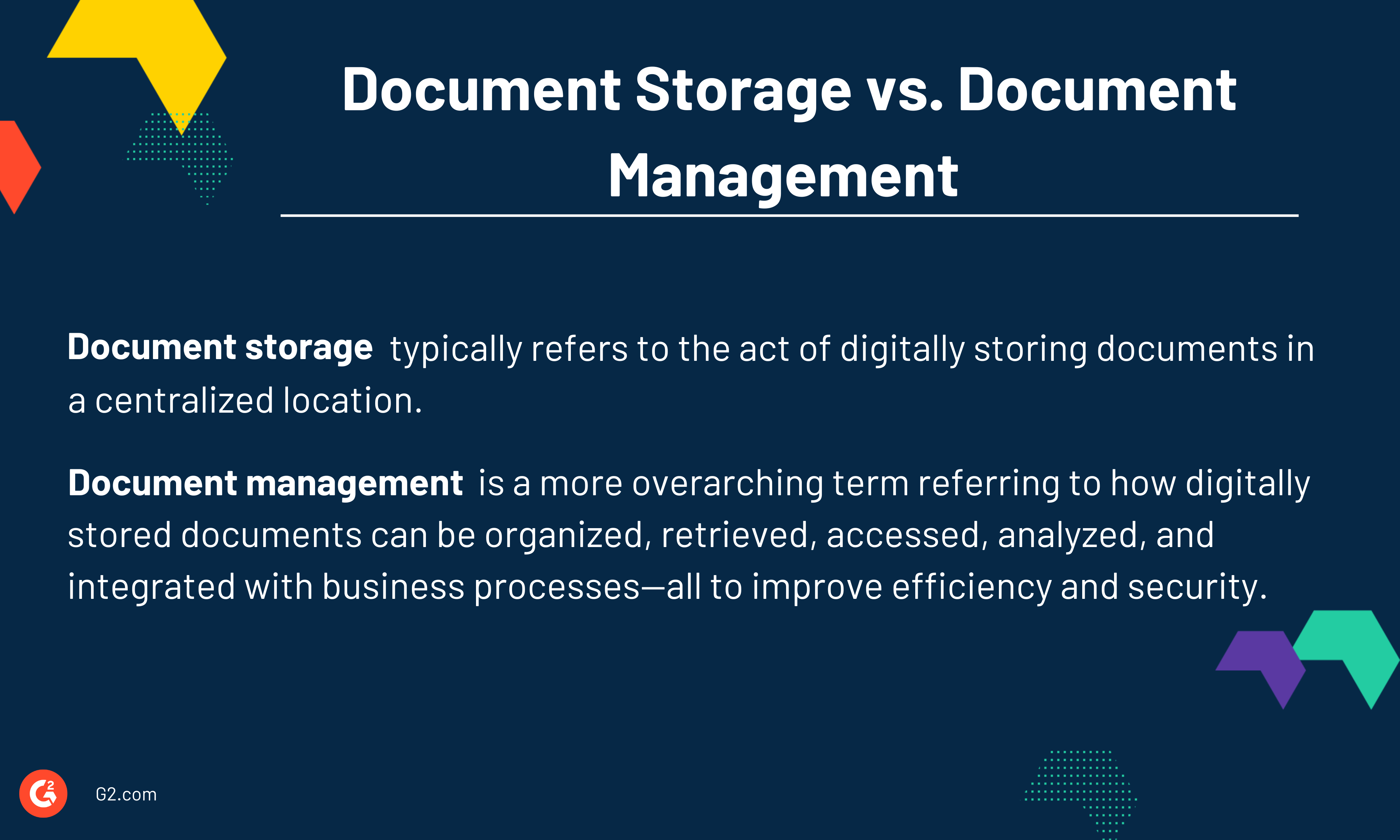What is document storage?
Document storage is the act of placing digital documents into a type of management system for the purposes of effectively and securely storing, managing, and/or organizing the information. Examples of digital documents are word documents, PDFs, presentations, invoices, scanned images of paper documents, and other business documents.
Document storage capabilities are most commonly offered by document management solutions, which store large amounts of company documents in a central repository. Document management systems help improve retrieval speeds, reduce lost documents, cut costs of physical storage, and improve workflows. However, storing information is likely to be a capability of any software involved with the management of or analysis of structured content.
Types of document storage
Document storage can be on premises or cloud based:
- On-premises storage: On-premises document storage entails using an organization’s own data servers to store content. This means the organization is responsible for the maintenance of the servers and the security of the content. There are advantages to on-premises storage, such as not relying on a third-party provider to keep the server up and running, giving organizations more control over their data. However, this option can be expensive since the organization needs to ensure that it has a proper backup system in place because files aren’t saved in the cloud automatically. An on-premises option is better suited for larger organizations with a dedicated IT team to manage the technical demands of maintaining an internal data server.
- Cloud-based storage: Cloud-based document storage operates online and is hosted by an external provider, who is responsible for the maintenance. Since this is taken care of externally, an IT team isn’t needed to install or maintain the system. There also aren’t large upfront costs for setup. Disadvantages include relying on internet connectivity to access files and storage limits. Additionally, since the data is stored and kept safe by the external providers, oftentimes companies need to expect some level of risk since their data is not with them.
Benefits of using document storage
Document storage is usually coupled with other features that make the act of digitally storing content in a central repository beneficial. Here’s how:
- Retrieval: With the large amount of data that organizations need to store, finding the right documents at the right time becomes a challenge. Most document storage solutions have search capabilities that allow users to search for documents using keywords that are included in the metadata or titles. More advanced search capabilities will use full-text search to look for keywords or phrases within documents’ text. This significantly reduces retrieval time.
- Security: One aspect of security is user permissions that document storage solutions allow for. Only authorized users will be able to access, view, edit, and/or share documents. Another aspect is being able to store documents in a central library, so as long as the data server is maintained properly, the documents are secure and won’t be misplaced or lost.
- Cost: Storing physical documents requires costly facilities, as well as additional time and resources to manually search for and retrieve the information you need. This can be avoided with digital document storage.
- Workflow: If set up correctly, some business workflows can extract data directly from records stored in digital document storage solutions, which helps streamline certain business processes.
Basic elements of document storage
The format of document storage may differ depending on whether they are standalone solutions or a part of a larger product.

Most solutions will include the following elements:
- Document capture and import: This is the process of placing documents into the storage system. Digital documents can be imported directly, but paper documents need to be scanned into a digital format first. Some solutions use OCR technology to convert images containing written text into machine-readable text data.
- Storage space: The amount of content that can be stored using a document storage system depends on the capacity of the data servers. Oftentimes, cloud storage space is limited, thus larger organizations opt for on-premises storage.
- Document organization: Storage solutions allow administrators to structure the systems in a way that best suits the organization’s needs. They may choose to sort documents by team, hierarchy, knowledge area, or client.
Document storage best practices
In order to make document storage work efficiently, follow these best practices:
- Clear naming conventions: Documents need to follow a clear naming convention to easily identify records and avoid confusion. Common naming conventions usually include keywords to describe the document, date of creation, and version number.
- User permissions: To ensure only authorized users have access to certain documents, user permissions must be set. This is often done by organizing users into groups, with different groups having different access levels.
Document storage vs. document management
Some may confuse document management with document storage, but the two are different.

Priya Patel
Priya is a Senior Research Analyst at G2 focusing on content management and design software. Priya leverages her background in market research to build subject matter expertise in the software space. Before moving back to Chicago in 2018, Priya lived in New Zealand for several years, where she studied at the University of Auckland and worked in consulting. In her free time, Priya enjoys being creative, whether it’s painting, cooking, or dancing.





















